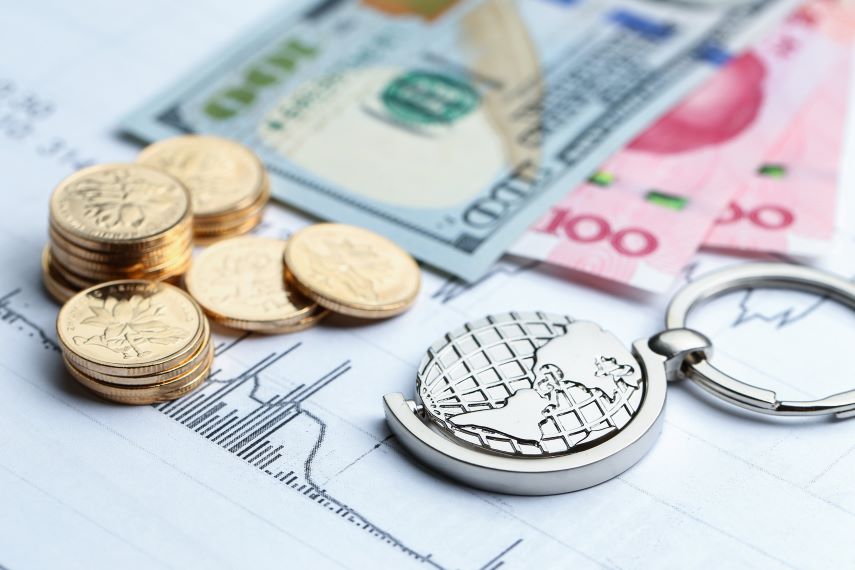Monday, June 30, 2025
Thailand’s economy experienced a slowdown in May, with weaker performance in the tourism sector and a decline in manufacturing production, according to a report from the Bank of Thailand (BOT). The central bank highlighted that, despite a sharp increase in exports, these two key sectors experienced challenges that offset the positive momentum in global trade.
Tourism Sector Struggles in May
One of the most significant factors contributing to Thailand’s economic slowdown was the weaker-than-expected performance of the tourism industry in May. The number of foreign visitors, particularly those coming from long-haul destinations, saw a noticeable decline. This drop in tourism revenue further exacerbated the economic challenges the country is facing, as tourism has been a cornerstone of Thailand’s economic growth in recent years.
The Bank of Thailand’s statement indicated that while regional tourism has remained relatively stable, international travelers—especially from Western countries—were less inclined to visit during the month of May. This decline is attributed to various factors, including lingering concerns about global travel uncertainties and increased competition from other destinations.
In addition to the decrease in tourist arrivals, the revenue generated from tourism also saw a significant dip. This was particularly concerning as the Thai economy had been relying heavily on the recovery of the tourism sector following the impacts of the COVID-19 pandemic. The reduced revenue from tourism has had a ripple effect on other industries, such as retail and hospitality, which are closely tied to the number of visitors coming to the country.
Manufacturing Sector Faces Challenges
Alongside the tourism sector, Thailand’s manufacturing production also showed signs of weakening in May. The central bank pointed out that there was a noticeable drop in production compared to April, which was primarily attributed to a few key factors.
First, there was a prior inventory replenishment in earlier months, which meant that manufacturers did not need to increase production in May at the same rate as before. Additionally, a temporary shutdown of an oil refinery for scheduled maintenance further contributed to the dip in manufacturing output.
Manufacturing has been one of the pillars of Thailand’s economy, and any slowdown in this sector often has broader implications, especially in terms of job creation and industrial activity. The bank’s report indicated that while the decline in May was temporary, it raised concerns about the overall stability of the sector as it grapples with global economic pressures, including higher energy costs and supply chain disruptions.
Exports Remain a Bright Spot
Despite the challenges in tourism and manufacturing, there was a notable positive development in the form of a sharp increase in exports. Exports remain a key driver of Thailand’s economy, and the surge in shipments, particularly in electronics, helped offset some of the other weaknesses.
The Bank of Thailand attributed the increase in exports to several factors, including stronger global demand for Thai goods, especially in the electronics sector. This growth was further supported by the acceleration of shipments during the tariff grace period, which allowed for faster exports before certain tariffs were set to take effect.
While the export sector provided much-needed relief for the economy, the central bank emphasized that Thailand must continue to diversify its export base and maintain competitiveness to ensure sustainable growth in the future.
Private Investment and Consumption
Private investment in May saw a decline of 0.6% from the previous month, a signal of caution among investors in the face of economic uncertainty. However, private consumption showed a modest increase of 0.2%, driven largely by continued demand for durable goods, which helped support household spending.
The uptick in durable goods consumption indicates that despite economic challenges, consumers are still making purchases, particularly in sectors such as automobiles and home appliances. This increase in consumption provides some hope that Thailand’s economy may avoid a more severe slowdown, even as key sectors face setbacks.
Current Account Deficit
Thailand’s current account registered a deficit of $0.3 billion in May, further highlighting the country’s economic challenges. The current account deficit indicates that the country imported more goods and services than it exported during the month, which could put additional pressure on the economy if the trend continues.
Looking Ahead
The Bank of Thailand’s report for May underscores a mixed economic picture, with weaknesses in tourism and manufacturing offsetting some of the gains from exports. While the export sector remains a bright spot for the Thai economy, it is clear that the country faces several challenges in the short term. These include uncertainties surrounding global travel trends and the impact of manufacturing slowdowns, both of which will need to be addressed for sustained growth.
Looking forward, the Thai government and businesses will need to focus on diversifying sources of economic growth, particularly in sectors such as technology, innovation, and infrastructure. Additionally, improving the resilience of the tourism sector through targeted marketing and investment could help mitigate the impact of global travel disruptions.
As Thailand moves through the year, it will be crucial for policymakers to remain agile and responsive to the shifting global economic landscape. Despite the setbacks in May, Thailand’s economy continues to show resilience, and with the right policies in place, it can overcome these challenges and maintain steady growth in the years to come.
(Source: Bank of Thailand, Reuters)
«Enjoyed this post? Never miss out on future posts by following us»
